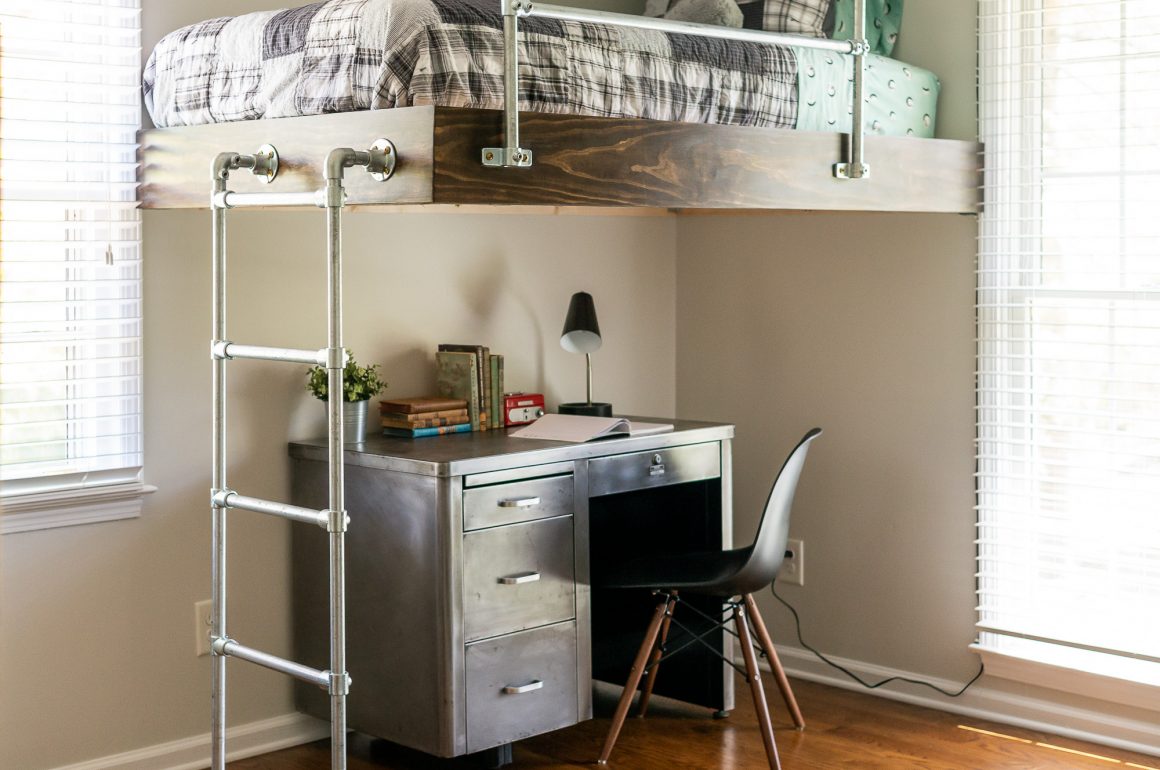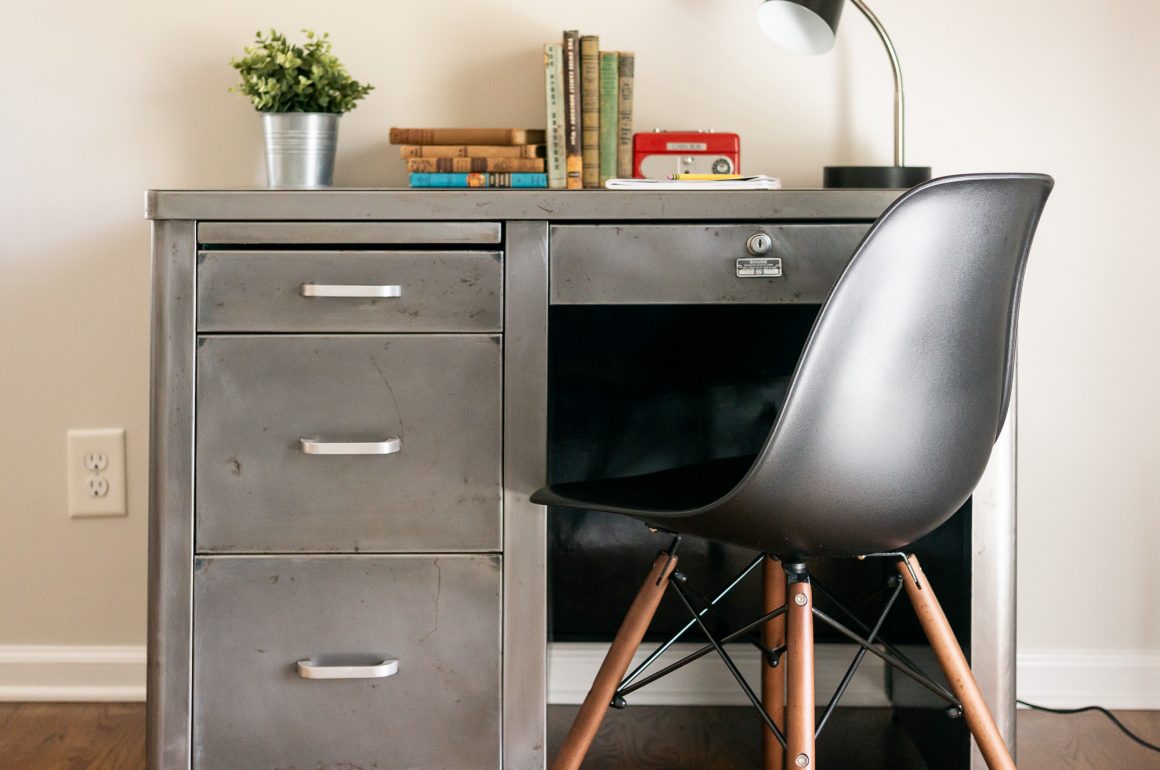Engineering with Dave | #067

Last Updated on July 8, 2020 by Tim Harman
So, you want to be an engineer? On this week’s show we dive into what Dave actually does as a professional structural engineer.
Note: this post contains ads and/or affiliate links.
FULL SHOW TRANSCRIPT
Auto generated by Otter.ai and then edited some. Mistakes are likely. 🙂
Dave Greenwood 0:00
Welcome to the You can, man.™ podcast episode 67 I’m Dave,
Tim Harman 0:05
I’m Tim, and Josh ain’t here. And on this week’s episode Engineering with Dave
alright guys welcome back to the You can, man.™ podcast where we believe what one man can do you can do as well with a little help from your friends and proper know how. Josh is not with us and we had to take a break last week to because of Josh.
Dave Greenwood 0:39
Yeah, I would say he’s not with us. You know by decision It was a choice
Tim Harman 0:43
You can, man.™ army over here Josh
Dave Greenwood 0:46
will look alright, it’s week what week two of his vacation and the guy he can’t be bothered to come on the podcast and to be here for the You can, man.™ army. I don’t know something about it. Say that he was having power issues
Tim Harman 1:01
is he’s like the power is going in and out and I can’t rely upon my cell coverage to call in. And I kind of need to do like a Wi Fi call and I can
Dave Greenwood 1:11
also is going in and out is the one hour drive. Is that just a bridge too far? I mean, you
Tim Harman 1:15
know, I thought the same thing I was like, man, I think
Dave Greenwood 1:18
I’d get my call to just drive down here. Look, I would be here for the You can, man.™ army. That’s all I’m gonna say. But Josh has made the decision that he’s not going to be here. I mean, there’s this empty chair right there
Tim Harman 1:28
Facebook group feel free to weigh in on this decision by Josh. We welcome your opinions. So I’m finally done with the loft beds finished like completely finished. Yeah, I mean, my part I think my wife does he go back and paint a couple little things but yeah, I think that I’m done. So I need to post some some pictures. However, my wife had done it all up nice for like we do like a reveal for the girls. Have you seen it? Well, they have been They just hadn’t seen it with like their beds on it and all that kind of stuff. And so we did this kind of, you know, little video reveal thing for them. And it looked great. And then we were just like, okay, tomorrow This is gonna be destroyed. Sure enough. I mean, it pretty much was just mayhem and so I’m gonna have to kind of get it back to picture ready. Oh, right. All right. Well, you taking
Dave Greenwood 2:21
a lot of pictures, you know, I need you to do I don’t know, like a montage or a collage or something.
Tim Harman 2:27
Yeah, I didn’t. I really didn’t do such a great job because I was under a little bit of a time crunch. So I thought about
Dave Greenwood 2:34
it was like a two month time crunch took forever, didn’t you?
Tim Harman 2:37
Well, that’s why I mean, it was like it just kept dragging out. So I was like, Look, I can’t I can’t be taking time to do like, nice pictures along.
Dave Greenwood 2:44
It was a serious project. Like it was quite an undertaking. Oh, yeah.
Tim Harman 2:47
No doubt. So it’s, it’s impressive. It’s, it looks awesome. I do have to sketch up so I could kind of do a little video. Walk around of the SketchUp
Dave Greenwood 2:57
Yeah, maybe do a tutorial.
Tim Harman 3:00
You should add Yeah, I mean, there’s not gonna be a whole lot to it. I mean, it’s gonna be like, Yeah, but you’re the one who brought it up right? I’m just joking. I built a wall here. And it’s basically kind of built like a deck, sort of just two platforms and wall. It’s a good looking deck kind of I did build these like cubbies but really, it’s just a just a plywood box.
Dave Greenwood 3:22
I don’t really like showing my wife. I didn’t like showing her those pictures, kind of like with Luke’s right because she’s like, Oh, can you do that? I’m like, No, I’m not gonna do that. You can totally do
Tim Harman 3:34
Oh, no, I can do it. I know I can do it. Now. My son’s Luke’s the one you’re referring to which you can find on UK man calm it’s the most visited blog posts on www.youcanman.com, check it out. Just type in loft beds and you should be able to find it. That one wasn’t nearly as involved. I mean, you could totally do that in a weekend. Easy.
Dave Greenwood 3:53
Yeah, that looks great. But you could tell that there was a lot less steps or just it was a lot like you said less involved.
Tim Harman 3:59
You Yeah, totally. But what else has
Dave Greenwood 4:02
been going on with you? Well, in the past two weeks, you may be wondering, has Dave lost power at his house? And yes, I have. So last podcast, I think it was the last one. I went on a rant about how terrible Marietta power is and they are continuing to be the worst power company on the face of the planet. It was a clear blue day. Sunny skies. Wow, zero wind, no earthquakes, no nothing. And the power just goes out randomly. I don’t know what the heck happened. I always get out there and drive around and pretend like I’m gonna yell at the power guys, but they weren’t out there yet.
Tim Harman 4:38
Do you think it’s a maybe the age of all the transformers?
Dave Greenwood 4:42
I don’t know what it is. But again, whenever it goes out, you can go onto their terrible website and report an outage and whenever I do that, and always say I think it’s 1100 and 27 affected customers. It’s always just my neighborhood or like a little area around my neighborhood. That’s out I’m telling you it happens all the time Marietta power you need to get your stuff to get you are the Comcast of power. Like you’re the worst. That’s the worst of the worst I never am I’ve never been I’ve never seen a power company I’ve never been a part of a power company that was worse the merit of power there is terrible
Unknown Speaker 5:18
the power goes out all the time we need to tag them or something
Dave Greenwood 5:21
we need to do something like I don’t know what else to do except to like go over there I mean, their property is all chained you know it’s fenced in so I can’t like you know, go on the property and demand to speak whatever
Tim Harman 5:31
anyway, I would be interested to see man if we could get we need to get like a lineman on the show. You know
Dave Greenwood 5:38
now that’s the thing I I’ve had an issue at my house where we had a tree fall on our power line and rip the power mast off the the roof I’ve talked about this before. And whenever I’ve talked to like some some guys came out they were super nice guys. They were really down to earth. Easy to talk to very apologetic. They were like, Hey, we got to cut you power off. I’m really sorry. They were super Cool. Whenever I’ve gotten anybody on the phone, they’re always very nice. But they just provide terrible service. They need to get it together.
Tim Harman 6:08
Whatever. I don’t know what’s going on with that, but it’s not good. Yeah, I’ve been continuing a lot of hiking Now when I say hiking I really mean trail running like spirited. I was gonna say spirited walking, but you’re really running, aren’t you? I’m pretty much going hiking briskly up to the top of the mountain. And then I’m pretty much running from there on out. And I’ve got this like five and a half mile, where do you park Do you park? Generally at like the at the visitor center. So
Dave Greenwood 6:37
you go over the mountain, and then do you cut like you go over to the other side, you come back around the mountain.
Tim Harman 6:43
For those of you guys that have not listened to this podcast previously, and you’re just joining us, thank you for joining us. I’m talking about Kennesaw Mountain National Battlefield Park. Best green space in all of Metro Atlanta In my opinion, and I’ve been doing a lot of hiking there. talk often about it because I love it so much and so that’s what we’re talking about but yeah I’ve been doing what I used to do in two hours in about under an hour and 10 minutes whoa
Dave Greenwood 7:09
I need to get that sub 60 minutes yeah
Tim Harman 7:11
oh also big news. Josh if he was here I’d rail on him about this because I got the GPS watch finally you did we’re all very happy for you official Garmin GPS watch I love it. I don’t think I’ll ever go back I don’t think I’ll always have a GPS watch it so here’s what’s weird I don’t
Dave Greenwood 7:31
think I’ve ever seen you wear a watch
Tim Harman 7:33
I don’t know watch for some I haven’t been I haven’t been but you got it on now. So now do you know Josh would always dog on me and your times are off your phone is like you know, it’s not accurate GPS
Unknown Speaker 7:45
or it didn’t happen GPS or it didn’t happen.
Tim Harman 7:47
Well, you know what? I finally did it and I got just and I mean just over like four tenths of a second over seven minute mile. So I can I feel very confident now that I could do a sub seven minute mile y’all turn in 39 in a month. Okay. Yeah,
Dave Greenwood 8:07
not a whole lot of running under your belt like you started, what? Six months ago? months ago?
Tim Harman 8:12
Eight months ago? Yeah. Yeah, roughly. It’s impressive.
Dave Greenwood 8:15
Oh,
Tim Harman 8:17
yeah, I feel pretty confident that I can do it. And I didn’t even I didn’t warm up to do that. So that’s another thing I need. I should have warmed up and then did my mile like, How fast can I do this? I’m gonna just,
I’m gonna be bold here and say that I think if I was on a track, I think I could do a six and a half minute mile.
Dave Greenwood 8:37
I think we need to find a track. I mean, I know we’re attracted to go to one.
Tim Harman 8:41
Yeah, I’m really interested to see if I can do it. Okay, Dave, this episode is all about you. Let’s set
Dave Greenwood 8:48
this up and say Tim is putting me on the spot tonight. I didn’t want to talk about myself. It’s not something I like to do, but that’s exactly why we’re doing was like this is gonna
Tim Harman 8:56
be great. There’s no better opportunity. It’s just me and you hear Dave? Yes, me. It’s really, really intimate. Yeah. And so I just thought this would be really good opportunity to talk about what Dave does, because we’re always joking back and forth, quote unquote, professional engineer which day it is. Yeah, he is a professional engineer. So I wanted to ask him questions about how he became an engineer. What’s it like? What do you actually do for so for those of you that are wondering, what does an engineer actually do, what it like, actually, day in and day out? I think we’ve all kind of got an idea, obviously, in our head about what an engineer is, but there’s all kinds of different engineering, right? So we’re going to hone in on days specific branch of engineering, which is structural engineering, specifically with wood. Yes. And Dave can go more into that. It looks like you’re about to correct and that is incorrect. It’s okay. All building materials, all building materials. Okay. thought before you were like to specialize just I did. I did specialize a wood. But we’ll get into that. Okay, so I wanted to start kind of with just the most basic of basic questions. What made you want to become an engineer?
Dave Greenwood 10:14
That’s something that asked myself every day. I don’t really know exactly why
Tim Harman 10:18
did I do this?
Dave Greenwood 10:19
Yeah, no, not not like that. But uh, it’s kind of an interesting, I don’t want to say story. But when I was young, I was terrible at math. And when I say I was terrible at math, like I was the worst kid in the room really at mat like they used to, they used to be like, hey, David, why don’t you go outside with Miss so and so into the lunchroom. And you’re just going to get a little bit of extra work with right and so I was just so terrible. Had a tutor who helped me out a ton. But I was really bad at it. And I think that’s probably part of why I ended up. I was so bad at it and it bothered me so much. I really like
Tim Harman 10:54
to just show yourself that you could overcome that. Yeah,
Dave Greenwood 10:58
I think there’s a little bit of that too. It was just it bothered me that I was so bad at it. So I was like, I’m gonna get good at it. And then I did get I got, I’m not gonna say good, but I got a lot better at it and just kept going with it. My grandfather was a civil engineer, which is what I am by education. So my grandfather was a civil engineer, my cousin’s a civil engineer. And so I just kind of followed in that those footsteps and I also knew, I was like, if I’m gonna go to college, for what ended up being seven years, okay to get a four year degree, whatever. I was, like, I’m gonna I want to get a degree that’s gonna get me a job like 100% like, I don’t want to write, I don’t want to get a degree that I’m, you know, not going to be able to,
Tim Harman 11:36
like gain employment, like art history or something like that.
Dave Greenwood 11:39
Right. So I love music when I was younger, I would have loved to have been a music major, but I didn’t want to be I didn’t want to be a teacher. And so there wasn’t, you know, I just wanted I wanted a career that or I wanted a degree that I knew was gonna get me a job right out of school, and I knew there was actually a engineering department. They had some statistics up and it said three months after you graduate, civil engineers from this Have 100% employment I was like, well, that’s pretty
Tim Harman 12:02
what school was that day.
Dave Greenwood 12:04
That was Southern Polytechnic State University. Rest in peace.
Tim Harman 12:07
Yeah. Which has now been absorbed, it was absorbed Kennesaw State University still weird driving by that campus.
Dave Greenwood 12:15
It is weird. It’s like driving on it. It’s weird, you know, just kind of rebranded everything. So KSU didn’t have a, an engineering program, right. Southern Poly didn’t have a ton of money. And so basically just like combined forces and whatever.
Tim Harman 12:29
Okay, so that leads us to the next question, which has to do with school. I kind of want to know, How bad was it? Because when I think about engineering school going through that, I mean, I guess you kind of touched on it being, you know, not very good at math. And then you overcame that. But obviously, to go through that schooling, you have to be dedicated to math and be top of your game for it. So I mean, how bad was somebody thinking? about engineering, and they’re just dreading the schooling of it. How bad was it?
Dave Greenwood 13:05
I’ll say this is certainly not easy. But it’s kind of, I hear people in other walks of life that say, you know, they go through these tough seasons of life or whatever. And they just say, you know, as long as you don’t quit, then, you know, I just never quit. I never I know, I just showed up every day or whatever. And I made it through it. Well, that was really how it was. With engineering school. A lot of people. You know, they quit after the first semester after the first year because it is tough. The first two years are really tough. You go through a lot of classes, and they kind of used to call them like weed out classes where they was your, you know, they just be kind of, you know, getting rid of the people that didn’t want to be there. And as long as you don’t quit, I mean, you can make it through it. If, if I can do it anybody can I mean, that’s cliche to say, but you can’t man you can’t man. I mean, it was it was definitely tough. I failed. A lot of questions have failed a lot of classes. I got a lot of C’s and I was trying to transfer to a different school and so I couldn’t transfer the C so I had to retake a lot of classes. I took every calculus at least twice.
Unknown Speaker 13:57
W hoa, yeah, cuz I kept getting C’s in em, it was
Dave Greenwood 13:59
tough. It Not easy. I mean, you have to take calc one calc two calc three, a lot of physics, a lot of chemistry. So it’s certainly not easy, but it is very doable. As long as you don’t quit, you know, keep getting after it and you can make it through it.
Tim Harman 14:11
That’s interesting to hear you say all those calculus classes that you had to take because I specifically chose my path in college to avoid all of those math courses. Yeah,
Dave Greenwood 14:22
those math courses don’t want to do that. is not fun.
Tim Harman 14:26
Yeah. Okay. So you you talked a little bit that you your your schooling was civil engineering, and technically that’s that’s the path but you are a structural engineer, right. So talk to us about your, your specialty. Well,
Dave Greenwood 14:42
what are you doing? If you want to be a structural engineer… I don’t think there are any structural engineering programs like structural engineering specific degrees out there. There may be one or two but by and large, if you want to be a structural engineer and design buildings, then you get a civil engineering degree. And that’s kind of like an umbrella. You Get to kind of pick a little track after that you can go structural, you can go transportation, which is like designing roads and highways. Or you can go wastewater treatment, which is basically I mean, it’s treating wastewater. It’s it’s designing those treatment plants. But anyway, I chose structural is what interested me the most. And so yeah, what do I do every day? I think I get asked that a fair amount. I think a lot of people don’t really understand what what I do. And so I do a lot of different things. But the best way I can describe it is I work with architects really closely. So what they do the architects, super smart people, but they’re very creative. They have a vision for a building, and they put a building on paper, they draw it out, they map it out, you know, kind of the layout of it. They determine all of that. They decide what what they want it to look like and a lot of times they have some visions of Granger, but anyway, they come out with a layout for a building and a look of a building. And then they you know, say kind of how do we build this What are they? They’re really good at putting buildings together and laying them out. And making them making them look very good. But they can’t really tell you How big does this beam need to be? How big does this column need to be? How big does loading need to be? I’m just trying to envision the drawings that they’re sending to you, they just giving you some like, like an elevation of the outside of the building and be like, this is the general shape that I want, or how detailed are the drawings that you then have to deal with? It depends on where we’re brought in, in the process, generally, we get we’ll get kind of their first pass. And so we’ll get a bunch of what we call plan sheets, which are basically kind of like if you’re flying over the building, and you’re looking at it, you know, from up high. So we’ll get all of the plan sheets of all the different levels and we’ll get some elevations and maybe some 3d renderings. And then we’ll, you know, when we kick off a project with an architect, we’ll go We’ll go meet with them and we’ll kind of talk through things and what are some things that they want to do what are some things They don’t want to do some things they want to stay away from, you know, a good example is they’ll say, so like for multifamily buildings or apartment buildings like these four and five storey live work play kind of places where you have apartment buildings on the second through fifth level and then down below, you have like retails real popular right now, those kind of places, a lot of times they’ll have balconies that are we call them cantilever balconies, they’re unsupported on the outside. So there’s no columns for these balconies. So they’ll say, well, we want to do cantilever balconies, and those look really cool. Like they kind of look like they’re floating out from the building. But it’s, you know, technically kind of hard to do that. So that, you know, that’s like a big question is, you know, how do we support these balconies and make these things work where they’re just kind of floating with no columns? figuring that kind of stuff out is what I do. It really gets down to I designed the columns, the size of the columns. I mean, if you open up the steel manual, there’s essentially I mean, there’s hundreds of different beam sizes in there and they’re you know, so we have a beam in a building, what size does it need to be I don’t know, like go ask an engineer. So that’s what It’s kind of what I do.
Tim Harman 18:01
Okay? How many times are you having to tell architects now you know, your vision is not going to
Dave Greenwood 18:05
happen. I like to say that I make architects dreams come true. But I also crush a lot of architects dream. Okay, so the guy that has to bring that news or do you just crunch the numbers and then somebody else has to tell them? Yeah, your fancy design is actually not going to work, we generally will tell them. So we’re generally hired by the architect. And so we have a real close working relationship with him. Most of the architects out there are super smart, they’re really on their game, and they’re really experienced. And so they kind of know what they can do and what they can’t do and but sometimes will come to us and say, Hey, we really want to do this crazy thing. How do we do it? We, you know, we can really make anything work, but it’s, how expensive is it going to be? Right? That’s kind of what I mean, my job boils down to, hey, we need to support this building as cheaply as possible. It’s essentially what we’re doing making it as light of a structure as possible, which means it’s a less expensive structure. So there are some times where we have to have some honest conversation with an architect and Say, Hey, you know, these three story tall, you know tall spaces with no you don’t want any columns and you want it all windows, you know, we have to kind of do that we can do it and it’s possible but it’s gonna be it’s gonna kill the budget, it’s gonna be way You know, they’re not gonna be able to afford it, that kind of thing. So sometimes you have to have those concepts. So you put them in a position of having to pick their battles, because they because they’re obviously responsible to their clients. Sure, yeah, they’ve got to work within their budget as well. So based on your feedback, they’re basically they’re probably picking and choosing which features or hills are going to die. That’s that’s a big part of the design process is we’ll we’ll get like halfway through designing a building architecture and and the engineering side and they’ll kind of give the, the drawings to the owner and they’ll go through, they’ll start pricing it and we’ll go through a process that’s called V or Value Engineering, where they kind of start pulling things out and they’ll say, okay, we don’t want to do cantilever balconies, because that’s very expensive. We’re going to add columns in and make it a lot cheaper. And so they’ll kind of pick it like you said, Pick and choose your battles through the V process and kind of bring that cost back down under control a little bit. Okay, talk to me about let’s say that multifamily mixed mixed use development shops on the bottom popular now playing a little community thing. How long is that process now not counting like zoning and stuff like that and then securing the property and nothing like that. It’s just the architect, they hire the architect. And they say we want this many dwellings, whatever. What does that what does that typical turnaround like? How long does that take as quickly as possible is generally the, the timeframe but that’s what we hear a lot is we you know, we need these drawings yesterday, but in general, it depends on how big it is and how complicated it is. And you know, is there a parking deck involved? Does the building wrap around a parking deck is there no parking deck? Is there a basement all these kinds of things kind of play into that equation but in general, the design part process takes anywhere from about three to six months to go from zero to a full set of drawings. Now I’ve been part of buildings that, you know, take a year. And you know, sometimes it’ll go on hold, like, they’ll pause it and say, Hey, you know, they’re having trouble with financing, and maybe it’s not gonna work out or right. You know, that kind of stuff, but generally three to six months, sometimes a little bit shorter, sometimes a little bit longer.
Tim Harman 21:23
And you’re pretty much always under the gun, because these developers, they’ve got carrying costs. I mean, they’re having to pay all these bills, and they’re not making any return or
Dave Greenwood 21:31
they can’t Yeah, they’re not making any money on this building until they open it up, right, they want to get it open as quickly as possible. And so we are under the gun a lot. Sometimes they’re, you know, project timelines have a little bit longer timeline, and so we’re not under the gun as much. But there are milestones within that, that process. So we’ll have a 25% set, a 50% set, like 50% completion, set the right hand to the owner 75%, that kind of thing. And so they’ll kind of price it throughout that process. So we do have milestones. We have to But in general, three to six months ish to get a building fully designed like that.
Tim Harman 22:05
Okay, what is the most satisfying thing about your work? Oh, good question. So when you leave or
Dave Greenwood 22:12
Yeah, when i when i clock out every day now it’s not that it’s construction can be it can be pretty stressful and sometimes there are some long a lot of times they’re long hours but you know, that’s one of the most rewarding things is
Tim Harman 22:25
going on site to look at stuff. Because I you said that before like,
Dave Greenwood 22:29
I feel like I do enjoy that. I mean really seeing be I mean, like, it sounds so cliche but like engineering the future like that kind of thing. Being able to see, you know, driving by a building that you designed, right, that’s gonna be there for 100 years is real. Hopefully the demo
Tim Harman 22:45
fall down.
Dave Greenwood 22:46
Yeah, fingers crossed. So yeah, seeing a building that you designed or you had a hand in designing is is really, really rewarding. It’s really cool to go out there on site and see, like there’s that huge beam that I did not Like if I saw a picture of a friend who was standing next to this beam that was like, I mean, it was literally like four feet tall. Like it was a gigantic beam. And just seeing that kind of stuff out in the field and then seeing the completed product is really, really satisfying.
Tim Harman 23:12
drive by with the kids. And you’re like, hey, yeah
Dave Greenwood 23:15
and they’re they’re just like, whatever dad, like, Who cares? Everybody’s dads designs buildings,
Tim Harman 23:20
but when they’re older, they will really appreciate that. I think that they will.
Dave Greenwood 23:25
Yeah, it’s it’s definitely a cool thing to see, to see that completed product. And
Tim Harman 23:29
I’m glad we’re doing this podcast and I’m interviewing you about all this because I don’t have something like this with my dad. I mean, he’s still living so I can talk to him about it. But I would have loved to have had, especially earlier on in his career. I don’t know. Is it just just a side note there of passing on the information that you wouldn’t normally just sit down and talk to your sons? Maybe you would? I don’t know. But about this is what daddy does every day. Yeah, I don’t know. Not gonna care. Right. But maybe you know, 15 years from now they might, they’ll know,
Dave Greenwood 24:03
they’ll be able to grasp it better than like, when I was a kid, my dad worked. He was an advertising Coca Cola amongst, you know, other companies he worked for, but uh, that was where he was the longest while I was a kid. And I just thought it was cool that I could go to his office and hit the button on the coke machine and get a free coke. Yeah, that’s all I cared about. Right. See, I can’t bring that I don’t bring that to the table with my children. So who knows what they’ll think. Yeah, I don’t know. Hopefully, they’ll appreciate it.
Tim Harman 24:27
Yeah, totally. Okay. What do you least like about your job? Oh, that’s a good one. That’s a good one. Where do you start? Like
Dave Greenwood 24:33
a lot of times we Yeah, a lot of times we get questioned on our design a lot. And so you know, I
Tim Harman 24:40
think this is gonna lead to my next question.
Dave Greenwood 24:42
Okay. May so like, I mean, what it boils down to what I do is I’ve depending on where the where a building is going to be in the country, or in the world, we figure out essentially, how hard is the wind gonna blow in a pretty much a hurricane situation, or how hard is the earth gonna shake Okay, in right, in a seismic event, then what Is the building used for how many people are going to be in it, and we design based on that, on that on those parameters. And we go through a long process design this building, and we have to make decisions along the way, like, hey, this column works based on the loads that we have applied to it. But it just barely works. And it’s a really important column, it’s supporting a really important area of the building. And so we’re going to beef that column up a little bit. Sometimes we’ll get questioned on that type of design where I mean, this isn’t a great example. But it kind of gets the point across.
Tim Harman 25:29
Is that really nice? Yeah, they’ll
Dave Greenwood 25:31
say, you know, do we really need that column to be that big, and then sometimes you’ll get peer reviewed by another engineer, and another engineer will say that columns over like, over design by a lot, and there’s reasoning behind it, but then when you take it out of context, you know, sometimes that questioning can be can be kind of frustrating. And then you know, you’re under the gun a lot. You know, like I said, these developers, they want to get these buildings occupied as quickly as possible because they’re not making money until they do and so you know, a lot of times you get pushed pretty hard in the design process to get it done very quickly. And most of the time, it’s not a big deal. But sometimes you can run into situations where you’re not able to do your due diligence because you’re having to do it so quickly. And you can run into issues there. So that can be difficult sometimes to Yeah,
Tim Harman 26:14
that has, this has everything to do with actually, and this is just my last question. And I know you, you’ve talked a lot about this before, okay, the beef between engineers, architects and contract news. That’s a good one. I mean, maybe we’re opening up like a whole nother show topic there. But you talked an awful lot about that. You name it, personality differences, how you work, prioritization. prioritizations of different things. When you’ve talked about it, it seems like there’s these three different worlds. And you said like, sometimes the architects can be cool and like they’ll learn more of your kind of side of things and and sometimes maybe with the contractors, but not nearly as much,
Dave Greenwood 26:55
right? I don’t know if I’ve ever said that to him. No, I have that. That is true that You do have these different camps. That’s a good point, like the architects, engineers and the contractors, you also have MEP, which has mechanical, electrical and plumbing. Okay, those guys, so those engineers, you have the electrical engineers and mechanical engineers, we’re all kind of on the design side. A lot of times it turns into the design kids and then the, the construction guys, and you know, there can be some battles there. A it’s one of those 80/20 rules 80% of the time, everything works out really well. And you everybody is on the same team. And we’re all working really hard to get, you know, to get to the same to the same point. You know, you’ll you’ll have some maybe some spirited conversations, but 80% of time it goes, it goes really well. 20% of the time, you’ll have you know, some people that are difficult to work with and, I mean, it’s engineers to engineers can be I mean, everybody knows they’re not the best people, you know, people people, right, like they don’t, they don’t communicate so well. And so, you know, 20% of the time you you have those struggles and you know, I don’t know what it’s like to be out in the field trying to get this building built and all the issues that they have to deal with. They don’t know what it’s like to be on the design side and you know, to be into the ground and trying to design this building and get it, you know, everything correct on the drawing so that they can build a crate. So sometimes, you know, you don’t you have to put yourself in the other person’s shoes and kind of look at it from their point of view, and you know, the things that they’re having to deal with. So that can be a struggle sometimes. Yeah,
Tim Harman 28:22
yeah. I mean, I can imagine that every single one of those groups of people is thinking the other two groups are the ones holding them up.
Dave Greenwood 28:28
Yeah, you do. You do run into that sometimes. But again, by and large, everybody, for the most part, especially the people that have been doing it a while they they kind of understand, you know, everybody, everybody’s dealing with something, you know, everybody has a bad day to a certain extent, but in general, people are kind of on the same team. Okay.
Tim Harman 28:45
But there is there is that undercurrent and your newer job you’ve got kind of in-house people because it’s more of like a design build it is
Dave Greenwood 28:53
as a design build company. So yeah, I used to, we’re using the example of, of an apartment building. I used to do a lot of apartment buildings at my old company, the company I used to work with. Now I’m working actually for a contractor design build contractor. And they have brought engineering in house. And so we’re doing we’re working very closely with the with the, with the contracting side and the construction side. And so we have in house architecture in house engineering, most of the time, or a lot of the time you have everybody’s in a different company, a different office. So you have a contracting company, you have an engineering company, right? You have an architecture company, where I work now it’s all under one roof.
Tim Harman 29:34
Is it making it any easier? I know you’ve been there like a month.
Dave Greenwood 29:38
Yeah, I’ve been I’ve been there only a couple months now. But there are a lot of benefits to the design build side, everybody being on under one roof. There’s a lot to be said about that. And so the communication process a lot of times is much more improved. The contractor is also there, they’re at the they’re at the table a lot earlier and so they get to put their input into the building a lot sooner. So a lot of times, a lot of things go on much smoother.
Tim Harman 30:01
Okay. Yeah. Well, I think that’s all I got for us for now. I mean, you being a professional engineer comes up quite a bit. So we’ll definitely be talking about it again. But a good riddens Josh, do we really need you? (I mean, look, this is going swimmingly.) Who needs Josh’s positive attitude here?
Dave Greenwood 30:21
I did the intro today and it went fine.
Tim Harman 30:23
It really did one take too. We didn’t have to redo that. We did have to look up to see what number episode we’re on, but other than that..
Dave Greenwood 30:29
It sounded kind of weird if I’m being honest, but we made it happen.
Tim Harman 30:34
We made it happen and Josh will be back next week. So, don’t fear Josh will be back. No issues. Alright guys, that’s gonna do it for this week’s show. Thanks so much for tuning in no bonus segment this week, but we’ll be back with that as well. Don’t you worry. We’ll be back with that. Take some time to leave us a review on Apple podcasts. Check out our Facebook group if you have not done so already. We’d love to See you there and we will catch you guys next time.
Transcribed by Otter.ai









Leave a Comment